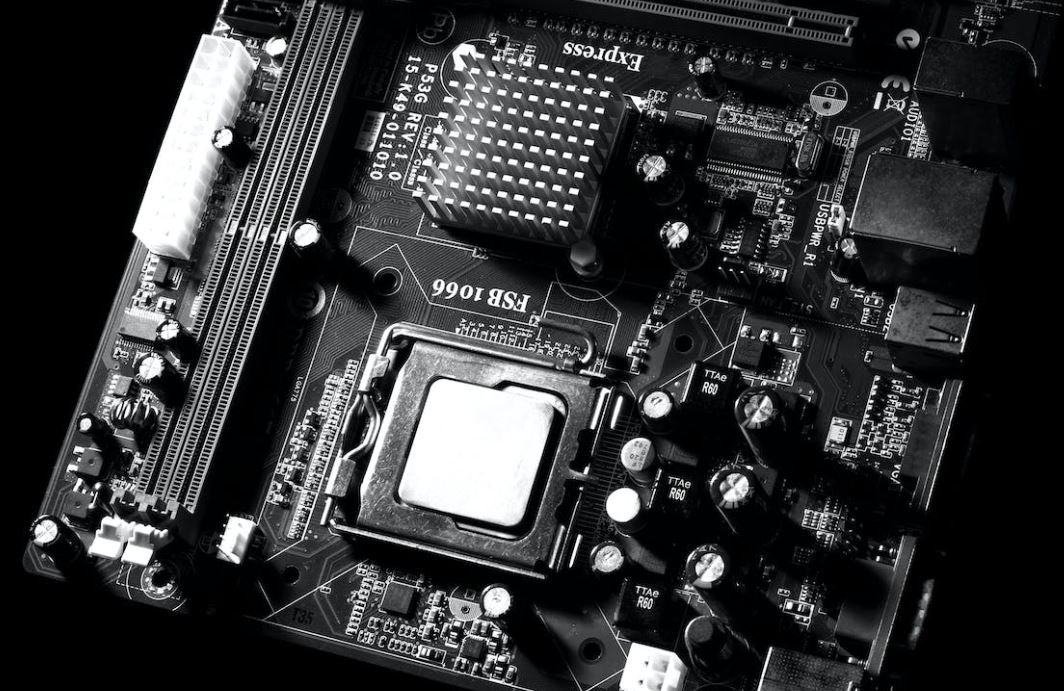What Is a Model Training Pipeline
A Model Training Pipeline is an essential component of machine learning where data passes through a series of stages to build, train, and deploy models. It involves various steps that transform raw data into a robust model capable of making accurate predictions.
Key Takeaways:
- A Model Training Pipeline is a series of stages that transform raw data into a trained machine learning model.
- It involves steps such as data preprocessing, model selection, feature engineering, model training, and model evaluation.
- A well-designed pipeline enables efficient model development, scalability, reproducibility, and ease of maintenance.
- Automating the pipeline helps streamline the model development process and reduces manual effort.
**Each stage of a model training pipeline plays a crucial role in the overall success of a machine learning project.** Starting with data preprocessing, raw data undergoes cleaning, normalization, and transformation to ensure it is suitable for analysis. *This step prepares the foundation for subsequent stages.* Model selection involves choosing the appropriate algorithm or framework that best suits the problem at hand. This decision heavily impacts the effectiveness and efficiency of the model.
In addition to selecting a suitable model, **feature engineering is pivotal**. This process involves creating new features or selecting relevant ones to improve the model’s performance. *Feature engineering can greatly enhance the predictive power of a model, even outperforming complex algorithms.* Once the data is cleaned and features are created, the model training stage begins. **Evaluating the model during training is essential to assess its performance and make necessary adjustments.** Proper evaluation ensures the model is learning from the data and making accurate predictions.
Data Pipeline Example
Let’s consider an example of a model training pipeline for predicting house prices. The following table shows the steps involved:
| Stage | Description |
|---|---|
| Data Preprocessing | Clean and transform raw housing data. |
| Feature Engineering | Create additional features related to square footage and neighborhood. |
| Model Selection | Select a regression algorithm such as Random Forest or Gradient Boosting. |
| Model Training | Train the selected model on the preprocessed data. |
| Model Evaluation | Evaluate the model’s performance using metrics like Mean Absolute Error and Root Mean Squared Error. |
The successful completion of the model training pipeline culminates in a trained model that is ready for deployment. The model can be used to make predictions on new, unseen data. By automating the pipeline, future updates and improvements to the model can be easily incorporated without repeating the entire process.
Benefits of a Model Training Pipeline
Implementing a well-designed model training pipeline offers several benefits:
- Efficiency: The pipeline streamlines the end-to-end development process, reducing manual effort and time required.
- Scalability: A well-structured pipeline allows for easy scaling, enabling handling of larger datasets and more complex models.
- Reproducibility: The pipeline ensures reproducibility of model development, facilitating collaboration and peer review.
- Ease of Maintenance: Modular pipelines make it easier to update and maintain models without disrupting the entire workflow.
Conclusion
A model training pipeline is a crucial element in machine learning projects. It encompasses various stages that transform raw data into a trained model capable of making accurate predictions. By following a well-structured pipeline, developers can efficiently build, train, and deploy models, enabling scalable and reproducible machine learning solutions.

Common Misconceptions
Misconception 1: Model training pipeline is only for data scientists
One common misconception is that model training pipelines are solely used by data scientists. While data scientists are typically the primary users of these pipelines, they are not the only ones who can benefit from them.
- Model training pipelines can also be used by software developers to automate the deployment of models.
- Business analysts can utilize model training pipelines to gain insights and make data-driven decisions.
- Data engineers can leverage pipelines to streamline data preprocessing and cleaning tasks.
Misconception 2: Model training pipelines are only used for machine learning models
Another misconception is that model training pipelines are exclusively used for machine learning models. While they are commonly used for training and deploying machine learning models, the concept of a model training pipeline is not limited to this specific use case.
- Model training pipelines can also be used for training and deploying other types of models such as statistical models or deep learning models.
- Pipelines can be employed in various domains such as natural language processing, computer vision, and predictive analytics.
- Model training pipelines can also facilitate the integration of different types of models and data sources.
Misconception 3: Model training pipelines are only for large-scale projects
Some people mistakenly believe that model training pipelines are only necessary for large-scale projects. However, model training pipelines can be beneficial for projects of all sizes, including smaller ones.
- Pipelines can help improve reproducibility and manage the complexity of model training workflows.
- Even small-scale projects can benefit from the automation and efficiency provided by model training pipelines.
- Pipelines can help accelerate the development and deployment of models, regardless of the project size.
Misconception 4: Model training pipelines are static and inflexible
There is a misconception that model training pipelines are rigid and lack flexibility. However, modern model training pipelines are designed to be dynamic and adaptable.
- Most pipelines support iterative development and experimentation with different models and configurations.
- Model training pipelines often incorporate techniques like hyperparameter tuning and model evaluation to enhance performance.
- Pipelines can handle changes in data formats, sources, and preprocessing steps to accommodate evolving project requirements.
Misconception 5: Model training pipelines are time-consuming to set up
Some individuals believe that setting up a model training pipeline is a time-consuming and complicated task. However, with the availability of various tools and frameworks, the process has become streamlined and efficient.
- There are several open-source libraries and frameworks such as Apache Airflow and TensorFlow Extended that provide infrastructure to set up pipelines quickly.
- Cloud platforms like AWS, Azure, and GCP offer managed services and tools for building and deploying model training pipelines.
- Reusable components and templates are available that significantly reduce the development time of model training pipelines.

Article Title: What Is a Model Training Pipeline
A model training pipeline is a crucial component in the development and deployment of machine learning models. It is responsible for transforming raw data into a trained model that can make accurate predictions or perform specific tasks. This article explores ten key elements of a model training pipeline, highlighting the importance and role of each in the model development process.
Data Collection
The first step in a model training pipeline is data collection. This involves gathering relevant data from various sources, such as databases, APIs, or web scraping. Data collection ensures that the model is trained on a diverse and representative dataset, thus improving its generalization capabilities.
Data Cleaning
Data cleaning is an essential part of the pipeline, as it involves preprocessing the collected data to remove errors, inconsistencies, or missing values. By cleaning the data, we reduce the potential for bugs and improve the accuracy of the trained model.
Data Transformation
Data transformation plays a crucial role in preparing the data for model training. This step involves converting data into a suitable format that can be used by the model. For instance, it may include normalization, encoding categorical variables, or feature scaling.
Data Splitting
Data splitting is the process of dividing the collected dataset into three subsets: training, validation, and testing. The training set is used to train the model, the validation set helps optimize its hyperparameters, and the testing set evaluates the final performance. Proper data splitting ensures unbiased model evaluation and prevents overfitting.
Model Selection
Selecting an appropriate model architecture is a critical decision in the pipeline. Different models, such as decision trees, neural networks, or support vector machines, have unique strengths and weaknesses. The choice of model depends on the problem requirements and the available dataset.
Model Training
The model training step involves feeding the prepared data into the chosen model and iteratively updating its parameters to minimize the prediction error. This process, often using optimization algorithms like gradient descent, allows the model to learn patterns and relationships within the data.
Model Evaluation
Model evaluation assesses the trained model’s performance and generalization capabilities. It typically involves metrics like accuracy, precision, recall, or mean squared error, depending on the problem type. Evaluating a model ensures it meets the desired level of accuracy and helps identify areas for improvement.
Model Hyperparameter Tuning
Every model has hyperparameters that affect its performance. Hyperparameter tuning involves optimizing these parameters to improve the model’s predictive power. Techniques such as grid search or random search help identify the best combination of hyperparameters.
Model Deployment
Once a model has been trained and evaluated, it can be deployed to make predictions on new, unseen data. Model deployment may involve integrating it into an application, creating an API, or generating executable files. Deployed models enable real-time prediction in various domains, such as finance, healthcare, or autonomous vehicles.
Model Monitoring and Maintenance
Model monitoring and maintenance ensure the model continues to perform accurately over time. Monitoring involves tracking its performance, detecting concept drift, and retraining when necessary. Regular maintenance guarantees that the model stays up-to-date with changing data patterns, customer demands, and potential adversarial attacks.
Conclusion
In this article, we have explored ten key elements of a model training pipeline, highlighting the vital role each one plays in developing and deploying machine learning models. From data collection to model monitoring, each step contributes to building accurate and reliable models that aid decision-making and automation in various industries. Developing a well-defined and robust model training pipeline is essential for ensuring successful machine learning model implementations and maintaining their efficiency over time.
Frequently Asked Questions
What is a model training pipeline?
A model training pipeline refers to the sequence of steps involved in training a machine learning model. It typically includes data preprocessing, feature engineering, model selection, hyperparameter tuning, and evaluation.
Why is a model training pipeline important?
A model training pipeline is important as it helps automate and streamline the process of training machine learning models. It allows for efficient experimentation, reproducibility, and scalability of model training workflows.
What are the components of a model training pipeline?
The components of a model training pipeline may include data ingestion, data preprocessing, feature extraction, feature selection, model selection, hyperparameter tuning, model training, validation, and evaluation.
How do you preprocess data in a model training pipeline?
Data preprocessing in a model training pipeline involves tasks such as handling missing values, outlier detection, feature scaling, encoding categorical variables, and splitting the data into training and test sets.
What is feature engineering in a model training pipeline?
Feature engineering is the process of transforming raw data into a set of meaningful, informative features that can be used to train a machine learning model. This may involve feature extraction, dimensionality reduction, or creating new derived features.
How do you select a model in a model training pipeline?
Model selection involves choosing the most suitable algorithm or model architecture for a given task. It often requires evaluating various models using techniques like cross-validation or grid search.
What is hyperparameter tuning in a model training pipeline?
Hyperparameter tuning involves finding the optimal values for the hyperparameters of a machine learning model. This is typically done by training multiple models with different hyperparameter settings and selecting the best performing one.
How do you evaluate a model in a model training pipeline?
Model evaluation involves assessing the performance of a trained model on unseen data. Common evaluation metrics include accuracy, precision, recall, F1 score, and area under the receiver operating characteristic curve (AUC-ROC).
What tools or frameworks can I use for building a model training pipeline?
There are various tools and frameworks available for building a model training pipeline, including popular ones like TensorFlow, PyTorch, Scikit-learn, and Keras. These provide APIs and utilities to perform data preprocessing, model training, and evaluation.
Can a model training pipeline be automated?
Yes, a model training pipeline can be automated using scripting languages like Python or through the use of machine learning platforms or workflow management systems. Automation helps save time and effort, especially for repetitive tasks.




